The Apartments of France’s Greatest Mistress Have Reopened
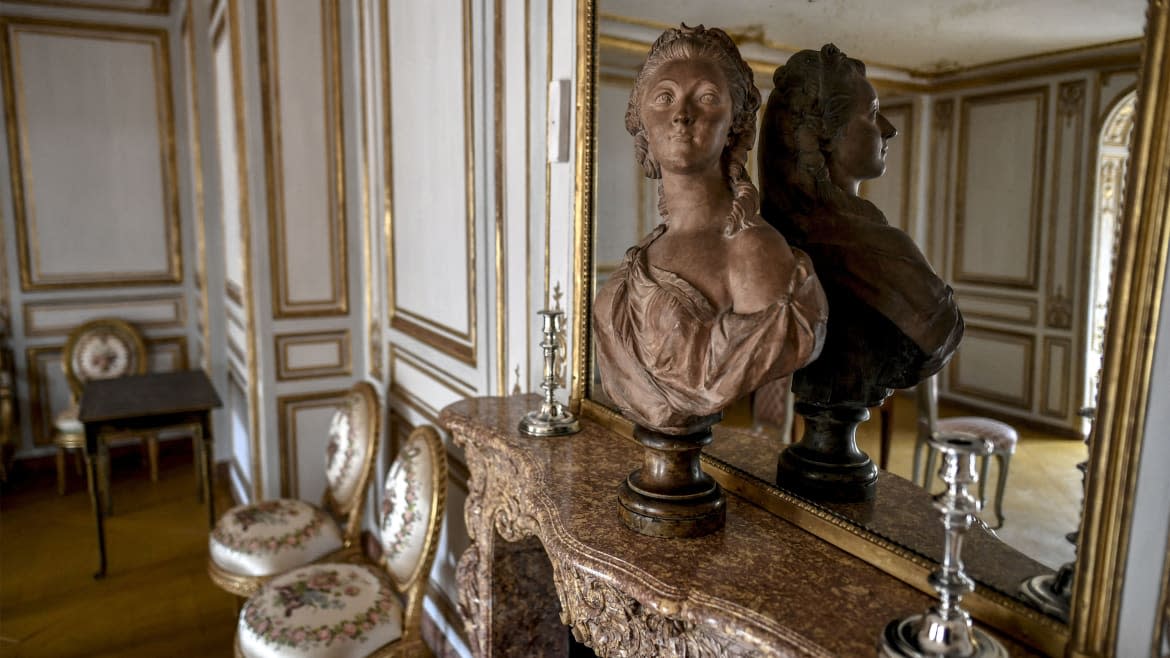
- Oops!Something went wrong.Please try again later.
- Oops!Something went wrong.Please try again later.
- Oops!Something went wrong.Please try again later.
- Oops!Something went wrong.Please try again later.
PARIS—A cursory glance at the early life of Jeanne Bécu reveals all the trappings of a fairytale.
Born in 1743 in the tiny village of Vaucouleurs in northeastern France, the strikingly beautiful daughter of an impoverished seamstress would go on to live in opulence at the Palace of Versailles where she occupied 14 elegantly appointed rooms and was known at court as the Contesse du Barry—King Louis XV’s official mistress and one of the most powerful women in the country.
Du Barry’s apartments have recently reopened to the public following a nearly two-year restoration project, and the unveiling of their sumptuous interiors has coincided with a Netflix film in the works, La Favorite, that is centered on the king’s final lover. Both projects are shining a new light on “La du Barry,” (as she’s known in France) whose legend has long been eclipsed by the larger-than-life specter of the palace’s most famous female resident, Marie Antoinette. France’s last queen, by the way, couldn’t stand the royal favorite. But more on that later.
“Illusion is the first of all pleasures,” Voltaire, who was a close friend of du Barry, wrote in his satirical poem, “La Pucelle d’Orléans,” and to look closer at the life of Versailles’ famed courtesan is to see the image of the rags-to-riches fable disintegrate, revealing an at-times tumultuous existence rife with scandal that ended at the guillotine on a frigid December afternoon almost 230 years ago.
Indeed, even before she drew her first breath, disrepute dogged the young Jeanne Bécu, whose conception is widely believed to have been the result of an affair between her mother Anne and a local Franciscan monk known as (you can’t make this stuff up!) Frère Ange (Brother Angel). The tryst with the monk hadn’t been her only liaison, and the exploits of Jeanne’s mother Anne were the talk of the village.
Some historians say Anne left Vaucouleurs to escape her reputation, while others credit her leaving to a brief affair with a wealthy man that resulted in a pregnancy. In her biography, Madame du Barry: The Wages of Beauty, the late Joan Haslip writes that Anne’s baby died a few months after he was born, and the father, a certain Monsieur Dumonceaux, invited Anne and little Jeanne to stay at the Paris home that he shared with his Italian mistress.
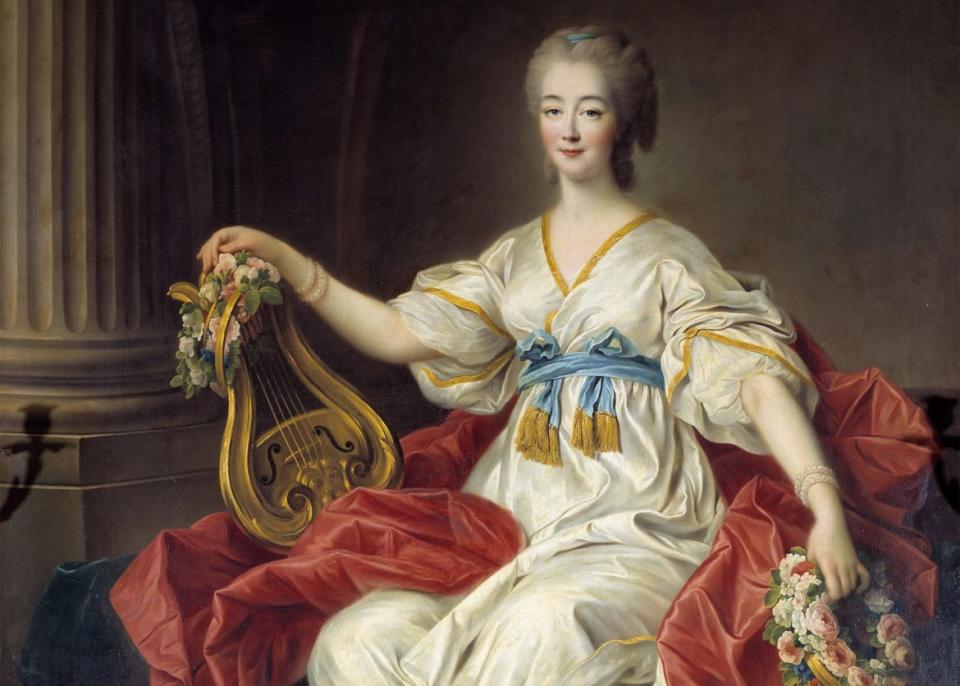
Portrait of Countess Jeanne (Becu) du Barry (Madame du Barry) courtesan and mistress of Louis XV.
Although she wasn’t too keen on having her lover’s sidepiece under the same roof, Dumonceaux’s mistress was very fond of Jeanne, who in turn developed a taste for haute living at a young age.
“…the lovely little Jeanne was given free run of the house and spoilt and indulged in every whim,” Haslip writes. “The two years spent in the luxurious home of a celebrated courtesan formed the tastes and character of the future Madame du Barry.”
When Anne married a local widower, Dumonceaux had Jeanne shipped off to be educated at a convent, where she would spend the next nine years alongside other young girls from disadvantaged backgrounds. In addition to learning to read and write, she also took art and music lessons and acquired domestic skills to prepare her to earn a living in service.
Jeanne left the convent at 15, and took a series of low-wage jobs, even selling trinkets on the streets of Paris at one point. She also began going out on the town, frequenting the French capital’s gambling salons, where some historians believe she was recruited by a high-class madam who specialized in furnishing wealthy men with pretty young things for evenings of debauchery in their Paris townhouses.
It was at one of these soirées that Jeanne Bécu reportedly caught the eye of Jean-Baptiste du Barry, a broke, but crafty nobleman who was fittingly nicknamed Le Roué (the old lech). Du Barry maintained a small stable of beautiful working women that he pimped out to other aristocrats including courtiers at Versailles, and Jeanne began making trips to the palace. In a coincidental homage to her father, she worked under the name Mademoiselle l'Ange (Miss Angel) and is believed to have slept with various courtiers in addition to her regular client, Maréchal de Richelieu.
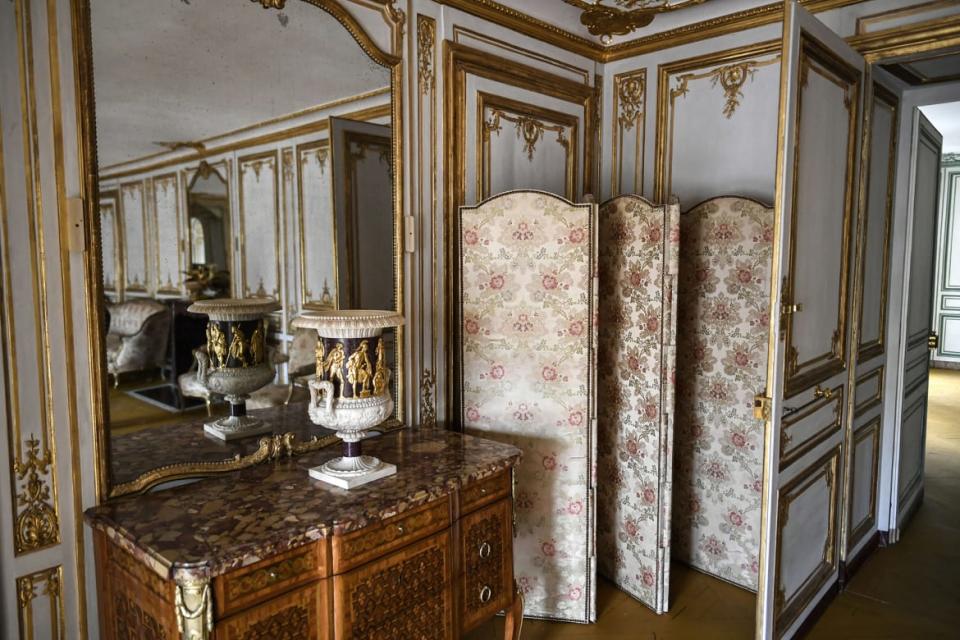
The renovated apartment of Madame du Barry in Versailles.
According to historians, when King Louis XV first laid eyes on the blonde beauty during one of her visits, he was instantly enamored with her. He had been in a protracted depression ever since tuberculosis claimed the life of his previous mistress and close friend, Madame de Pompadour, but the sight of Jeanne Bécu jolted him out of his morose stupor. Never mind that she was over three decades younger, or that it was impossible for her to be presented at court, let alone assume the coveted role as the king’s maitresse-en-titre (official mistress).
To be presented at Versailles, not only was a woman required to be a member of the aristocracy, but she also had to be married and Jeanne Bécu was neither. However, rather than being daunted by the impossibility of a romantic union between the king and one of his “top girls,” the scheming Le Roué jumped at the opportunity to up his influence at court. Already married, he was unable to take Jeanne as his wife himself, so he enlisted the help of his single brother Guillaume, who he reportedly paid to briefly step in as Jeanne’s titled husband.
A hasty, pre-dawn marriage ceremony followed, during which fake documents were procured attesting to Jeanne’s noble lineage and exaggerating du Barry’s. Everyone played along, and even the king’s genealogist is said to have deliberately looked the other way. On September 1, 1768, Jeanne Bécu officially became the Comtesse du Barry. The gorgeous pseudo noblewoman was officially presented at court about six months later, where she caused a stir.
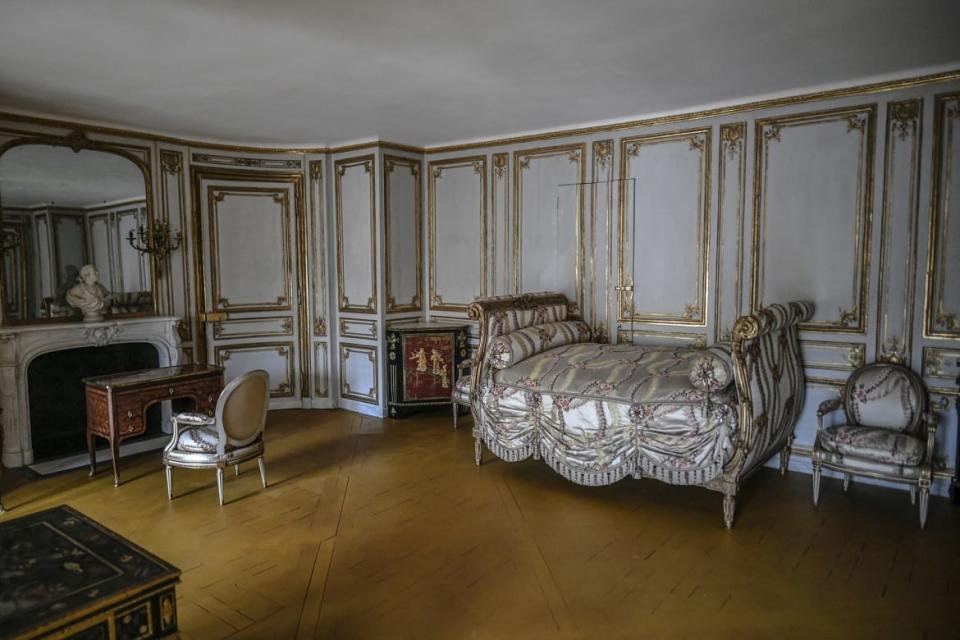
A partial view of the renovated apartment of Madame du Barry in Versailles.
“At 25-years-old, Madame du Barry was the incarnation of beauty,” historian Evelyne Lever recounted in a television documentary, Secretes d’Histoire, that aired on France 3 a few years ago. “She was a veritable goddess.”
In 1770, the newly minted royal mistress moved into her own apartments at Versailles. The 14-room spread was located just above the king’s chambers and was accessible via a warren of private staircases. On her request, the main rooms were decorated in white and gold–a privilege typically reserved for princes. On the day I visited the apartments it was blindingly sunny, and the afternoon light flooding through the tall windows illuminated the gilded walls and shone on the parquet like oversized bullion bars.
It's the other half of the dwelling that truly stands out, though, particularly the colorful woodworking—mint green for the dining room, for instance, and pale rose for the bathroom’s antechamber. I was particularly fond of the bathroom with its delicate azure paneling and sizable copper bathtub. Apparently, La du Barry had access to both hot and cold running water, which was almost unheard of at the time.
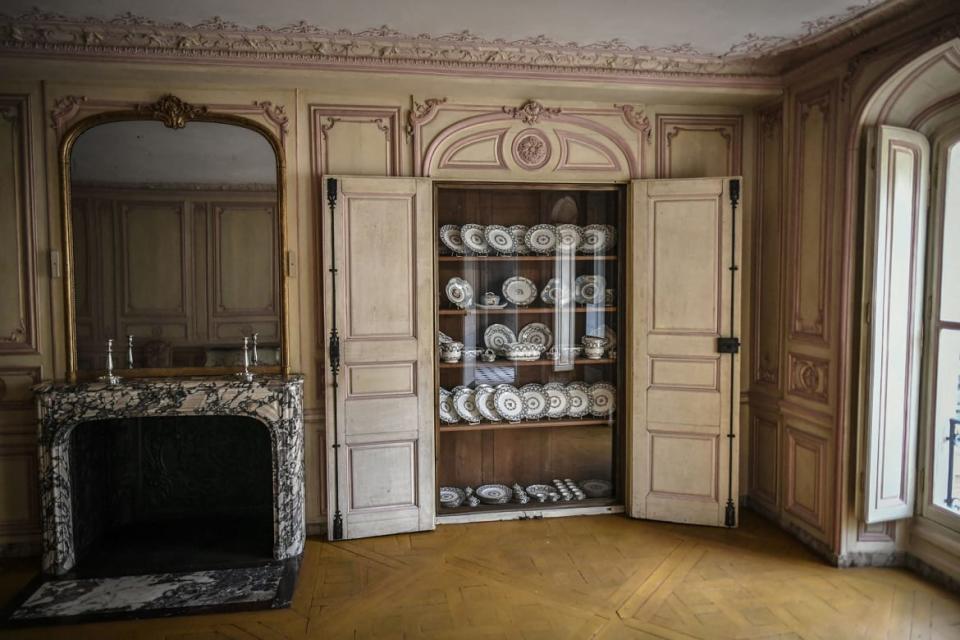
The renovated apartment of Madame du Barry in Versailles.
In addition to her exquisite face, the royal favorite was also lauded for superior taste. According to museum officials, she is credited with helping to “usher in the neoclassical art style at Versailles,” and she had the apartments’ rooms carefully furnished with items crafted by the top artisans of the day. Most of the original objects have since been scattered around the world, but a few remain, including a jewel-like table by the renowned cabinetmaker Martin Carlin with an inlaid stone top and a pair of Sèvres porcelain vases. The rest of the items have been sourced from the palace to evoke the ambiance of the spaces as du Barry would have known them.
It was in these rooms that Madame du Barry entertained friends over tea, the king and his mistress hosted small dinners, and the former met with his advisers. There’s a discreet, pared-down elegance in the apartment that’s absent from the better-known rooms of the chateau with their elaborate frescoes and leviathan proportions. Maybe it’s the lower ceilings or the smaller spaces, but there’s a warm, human-scale quality to du Barry’s dwelling that makes it easy to see why the king and his mistress retreated here to conduct their daily lives.
During her time at the palace, du Barry was showered with lavish gifts from her smitten royal lover, including jewelry, cash, and a chateau west of Paris in Louveciennes. Among his more extravagant gifts was a 28,000-carat diamond necklace he had commissioned from Boehmer and Bassenge—one of the 18th-century’s top jewelers—that wasn’t completed during his reign. The bling would go on to tarnish Marie Antoinette’s reputation and, some argue, cost the queen her head, as a result of the infamous “Affair of the Necklace” scandal.
However, all the over-the-top grandeur couldn’t erase the fact that Madame du Barry was isolated at Versailles. Whispers about her background as a commoner, and worse, a sex worker, buzzed around the palace, and the other courtiers shunned her. Her physical pulchritude and daily extravagances ignited jealousy among many of the women, and the powerful Duc de Choiseul (who was miffed that Louis XV had passed over his sister for the role of chief mistress), launched a negative publicity campaign against the king’s lover in the hopes of driving her out of court.
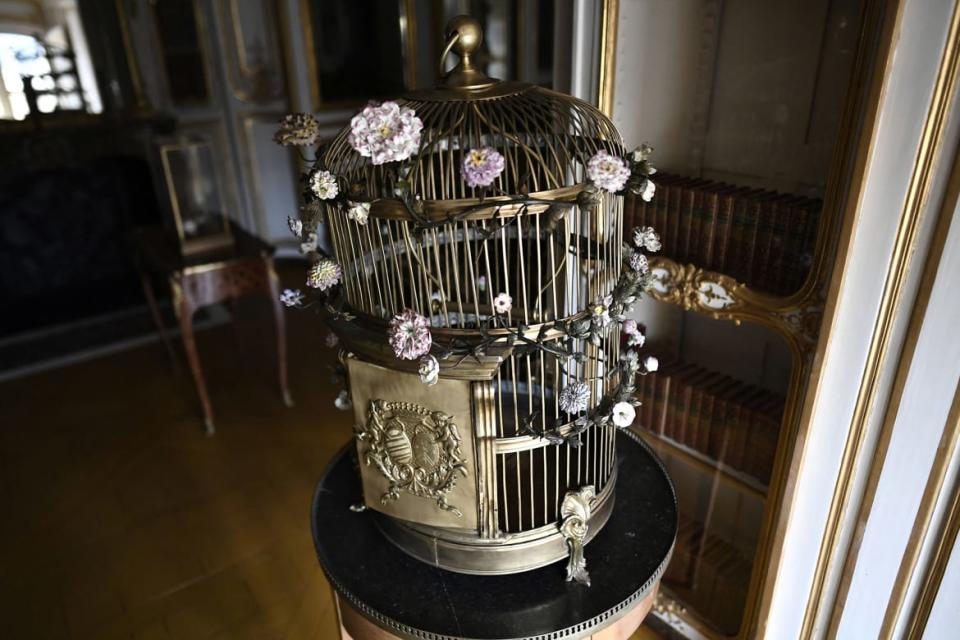
A birdcage at the renovated apartment of Madame du Barry in Versailles.
De Choiseul wasn’t alone in his loathing of the royal favorite. When a teenaged Marie Antoinette arrived at court, she detested La du Barry almost instantly. Whether she was horrified by her scandalous past or simply jealous of her beauty and influence over the king (likely both) the queen-to-be refused to even acknowledge her.
“The King could not be kinder and more full of attentions,” she wrote in a letter to her mother, Empress Maria-Theresa of Austria. “I love him dearly, but it is pathetic to see how weak he is with Madame du Barry, who is the silliest and most impertinent creature imaginable.”
Apparently, the tension between the two women became so blatant that Maria-Theresa had to intervene. Fearful that her daughter’s mean-girl antics could damage Franco-Austrian relations, she ordered her daughter to extend an olive branch to her rival.
Marie Antoinette acquiesced, and during a gathering, approached the woman she commonly referred to as “that creature,” saying, “There are a lot of people today at Versailles.” Cue a collective sigh of relief at court.
Unfortunately, this public display of peacemaking did nothing to quell the young dauphine’s animosity toward La Favorite. Indeed, immediately upon the king’s death from smallpox in 1774, Louis XVI wasted no time in exiling La Du Barry to a nunnery in Meaux.
“The King expects a lot of changes from the new regime,” she wrote in a triumphant letter to her mother. “Everyone with the name of du Barry has been banished from court.”
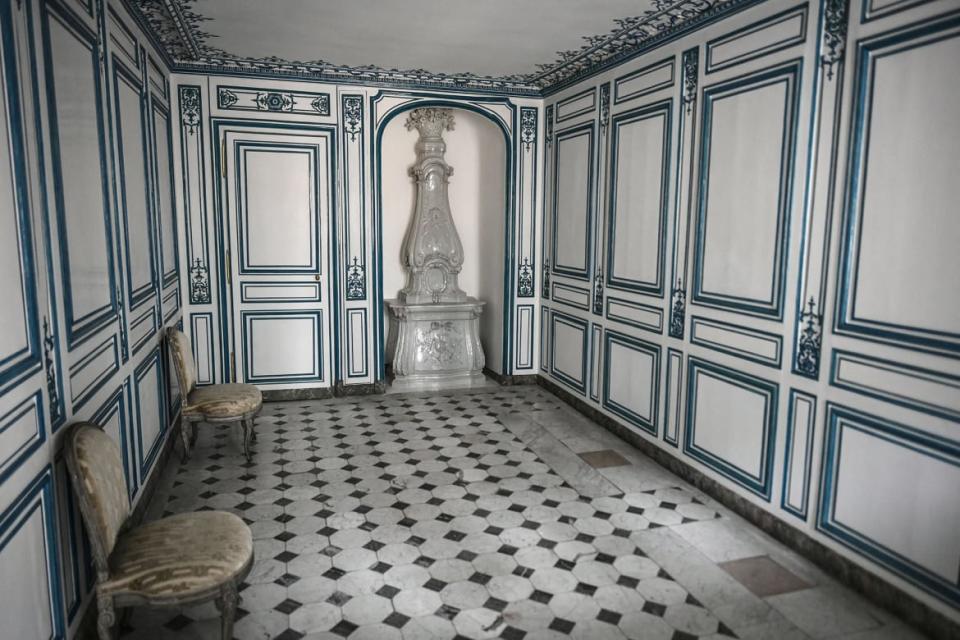
A partial view of the renovated apartment of Madame du Barry in Versailles.
Despite years of rancor, the royal couple eventually softened somewhat toward the one-time favorite, and Louis XVI granted her permission to retire to the chateau in Louveciennes that had been gifted to her by his predecessor. He even agreed to foot the landscaping bill, which to du Barry’s delight, allowed her to transform the grounds into an English-style garden complete with a theater and a temple-like gazebo for music concerts.
Post-Versailles life for the 33-year-old retired mistress was luxurious, quiet, and free of the drama that had plagued her during her days at the king’s side. In addition to welcoming high-ranking visitors to her home, she enjoyed plays and concerts at the property’s open-air theater. She also embarked on a longtime affair with the Duc de Brissac, the governor of Paris and loyal courtier to Louis XVI, which won her points at the palace. Indeed, she gained such respect within the court that even Marie Antoinette’s brother Joseph II paid her a visit, reportedly proclaiming, “Madame, beauty is always queen.”
Madame du Barry would have likely continued to enjoy a life of tranquil splendor at Louveciennes into her old age, had the French Revolution not come knocking. She may have even avoided the guillotine had she kept a lower profile. But following the theft of what today would amount to millions worth of jewelry from her home, she published a list of what was taken and the monetary value of each item, basically outing herself as a member of the aristocracy.
The list of pricey jewels coupled with her numerous trips to England to try to recover them (and possibly to assist exiled nobles) tipped off the revolutionaries. She was arrested for conspiracy and held at Sainte-Pélagie prison before being transferred to La Conciergerie where her former enemy Marie Antoinette had been locked up just weeks earlier.
However, unlike the queen, Madame du Barry refused to accept her death sentence. She tried bargaining with her captors, revealing the hidden locations of her remaining jewels in a vain attempt to buy her way out of the impending execution. And when zero hour did arrive on December 8, 1793, she didn’t go quietly.
While Marie Antoinette is said to have met her fate with dignified silence, the onetime royal favorite screamed, wept, and pleaded for mercy. And, as the tumbrel halted at Place de la Revolution, Madame du Barry was faced with a bloodthirsty mob of onlookers comprising members of the same underprivileged milieu that she herself had been born into a half-century earlier.
“The life of Comtesse du Barry, the last official mistress of Louis XV represents one of the greatest tragedies of the Ancient Regime,” the editor’s note reads at the preface of Jacques de Saint Victor’s biography of the doomed courtesan, Madame du Barry: Un Nom de Scandale.
Whether her life was a fairytale, a scandal, or a tragedy (or a dazzling, chaotic mélange of the three), Madame du Barry didn’t want it to end.
“Just one moment more, Mr. Executioner, one little moment more,” she is reported to have begged as the executioner in question hurriedly pushed her into position on the scaffold.
Get the Daily Beast's biggest scoops and scandals delivered right to your inbox. Sign up now.
Stay informed and gain unlimited access to the Daily Beast's unmatched reporting. Subscribe now.

